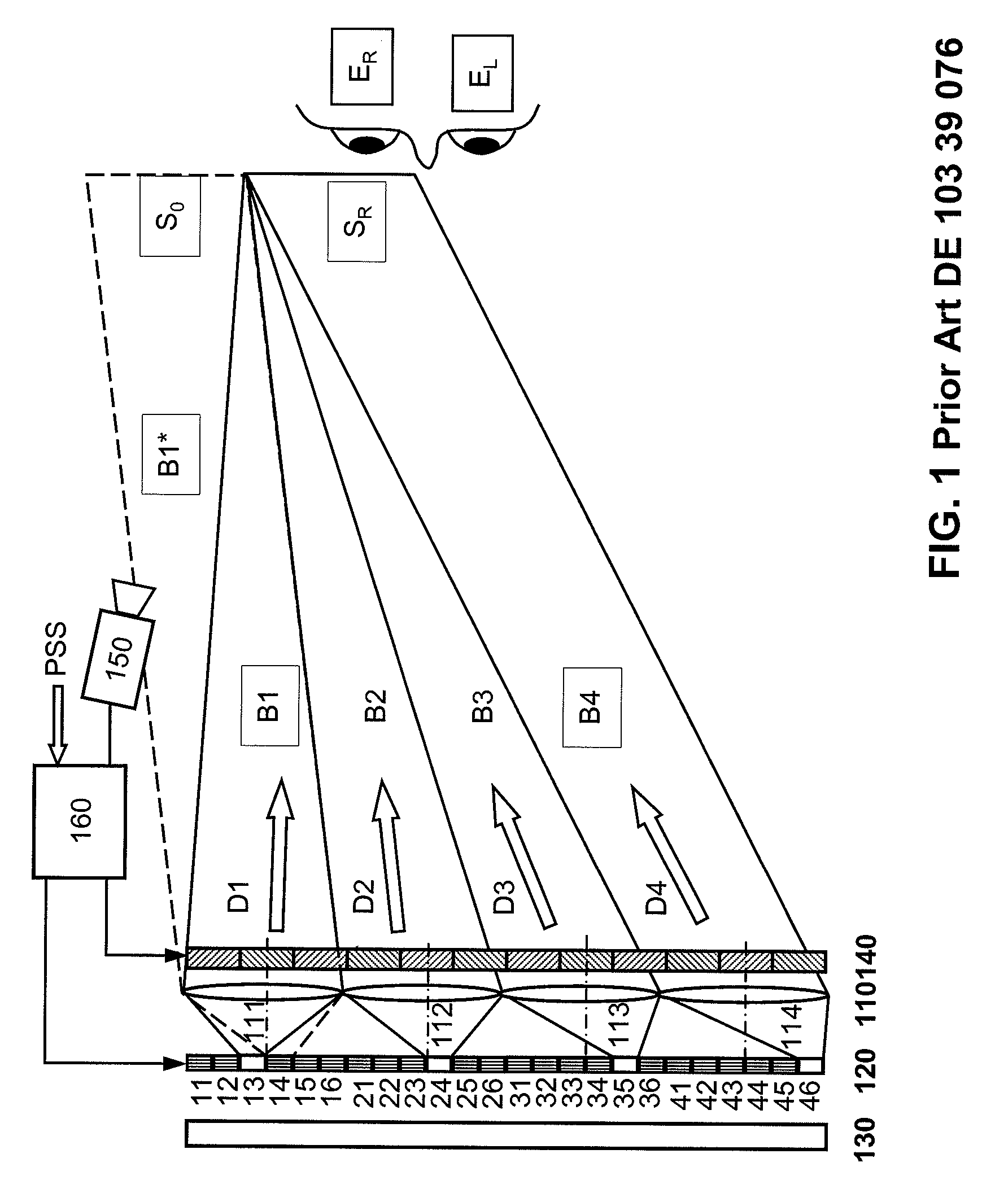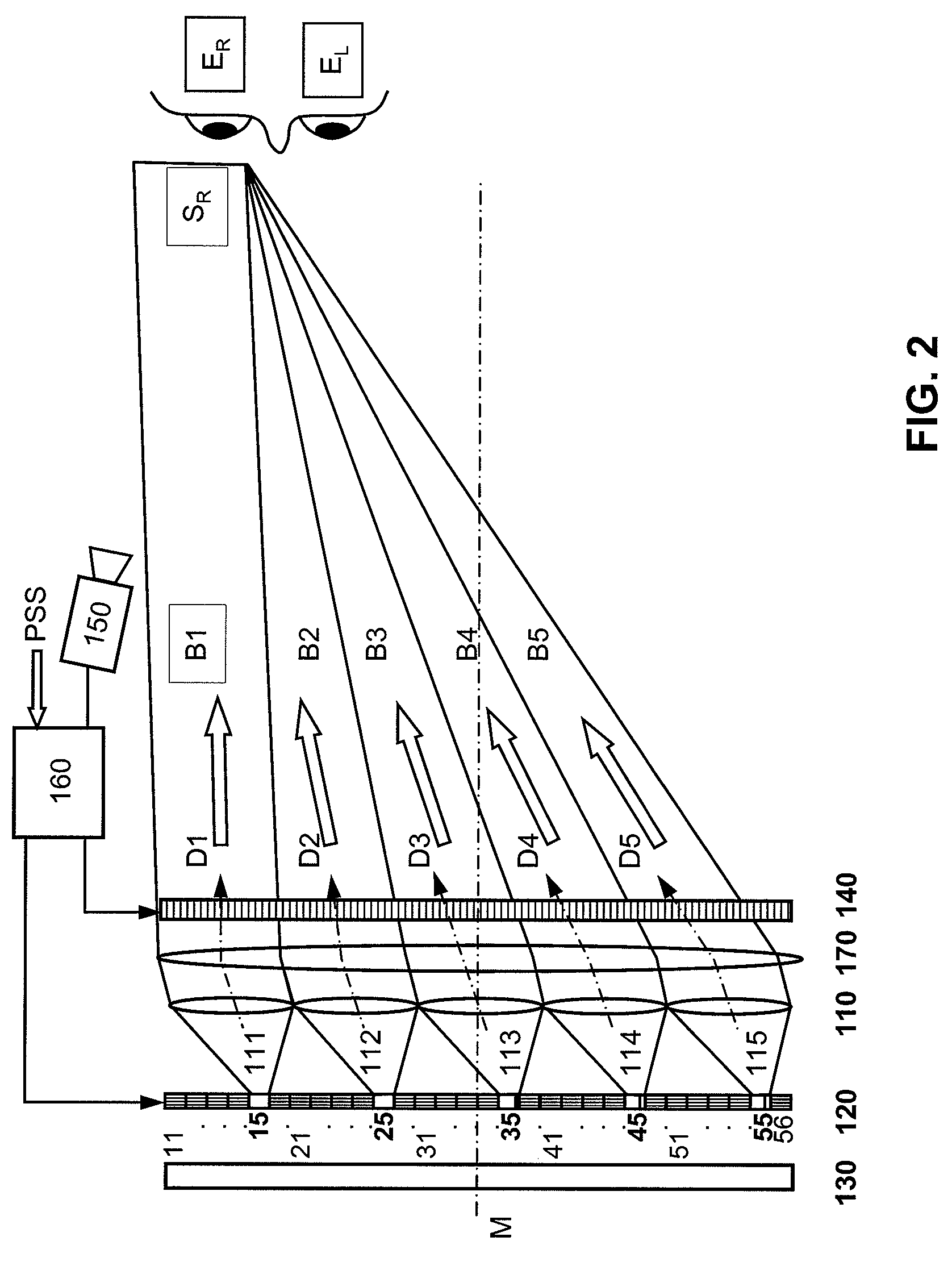Multi-user autostereoscopic display with position tracking
a multi-user, position tracking technology, applied in surveying, navigation, printing, etc., can solve the problems of multi-user operation, difficult practical realization of such a multi-user display, and disadvantages of using a diffuser plate, so as to achieve low cost, low cost, and low labor intensity
- Summary
- Abstract
- Description
- Claims
- Application Information
AI Technical Summary
Benefits of technology
Problems solved by technology
Method used
Image
Examples
Embodiment Construction
[0052]During the course of this description, like numbers will be used to identify like elements according to the different views that illustrate the invention.
[0053]The autostereoscopic multi-user display according to this invention is described with the help of embodiments and illustrated in the accompanying FIGS. 2-7. Identical functional elements of the autostereoscopic multi-user display according to this invention are denoted by same reference numerals in all figures.
[0054]FIG. 2 shows, with the example of the right eye ER of an observer, the arrangement of elements according to the invention, where numeral 110 denotes an imaging means with lens elements 111-115 and numeral 120 denotes an illumination matrix for generating a bundle of rays B1-B5 for each lens element 111-115. In this embodiment, the illumination matrix 120 is a shutter which uses the light of a large-area light source 130. The shutter contains transmissive illumination elements 11-56. It is an LCD or FLCD pane...
PUM
| Property | Measurement | Unit |
|---|---|---|
| width | aaaaa | aaaaa |
| width | aaaaa | aaaaa |
| focal distance | aaaaa | aaaaa |
Abstract
Description
Claims
Application Information
 Login to View More
Login to View More - R&D
- Intellectual Property
- Life Sciences
- Materials
- Tech Scout
- Unparalleled Data Quality
- Higher Quality Content
- 60% Fewer Hallucinations
Browse by: Latest US Patents, China's latest patents, Technical Efficacy Thesaurus, Application Domain, Technology Topic, Popular Technical Reports.
© 2025 PatSnap. All rights reserved.Legal|Privacy policy|Modern Slavery Act Transparency Statement|Sitemap|About US| Contact US: help@patsnap.com



